The ancient Celts were tribes and groups living in different areas of central and western Europe. They lived in these areas from the late Bronze Age to the end of the Iron Age. Since they are diverse and each tribe has their unique culture and set of traditions. However, they are unified by their use of the Celtic language. They also share similarities in their warfare, burial practices, and religion. Another factor that unified the tribes was their art.
Celtic art revolves around symbolism paired with geometric designs and non-linear patterns. Their art has different variations, but they feature almost the same things. The subject of their crafts is mostly their enigmatic gods, forest animals, and naked warriors. They use swirling, vegetal, and complex designs to portray nature’s different aspects and highlight the mundane things they do every day. Here are the top 10 Celtic art you need to see to appreciate their culture more.
Battersea Shield
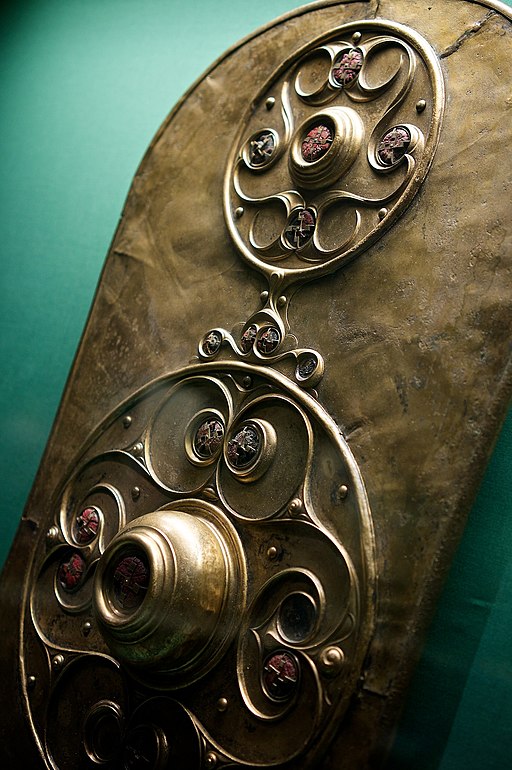
The Battersea Shield is one of Celtic civilization’s most important art pieces. Archaeologists found it on the River Thames in London alongside different Roman and Celtic weapons. Several skeletons were also found in the riverbed. These pieces of Evidence lead archaeologists and historians to conclude that it was the site of Julius Ceasar’s crossing during Britain’s invasion in 54 BC.
The shield has the typical British Celtic La Tene style. It is decorated with spirals and circles. It is a wooden shield covered with bronze. The shield features twenty-seven small round compartments or framed studs. The frames are made of four sizes of red enamel or opaque red glass and placed artistically around a large circle. The bronze inside the compartments symbolizes the whirling sun, which is associated with the swastika, good luck, and solar energy.
Tara Brooch
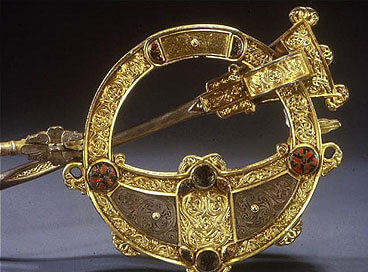
Tara Brooch is one of the greatest surviving Celtic metalworks. It was named after the Hill of Tara, which homes the legendary seat of Ireland’s High Kings. A peasant woman discovered it in 1850. The Tara Brooch exemplifies the advanced goldsmithing craft in Ireland during the early Christian art era. The front facade is embellished with interlace panels in gold brushwork and zoographic triskeles with numerous geometric shapes in amber. Multiple connecting parts of the brooch are adorned with animal and human heads glass designs. The back part is more plainly decorated, with silver panels fastened over copper.
Although Tara Brooch looks like a penannular ring brooch used for fastening woolen cloaks, it was intended as a decorative symbol. Scholars and historians believe it was a piece of jewelry made for a person of wealth and high status based on its high-quality materials and impressive craftsmanship.
Gundestrup Cauldron
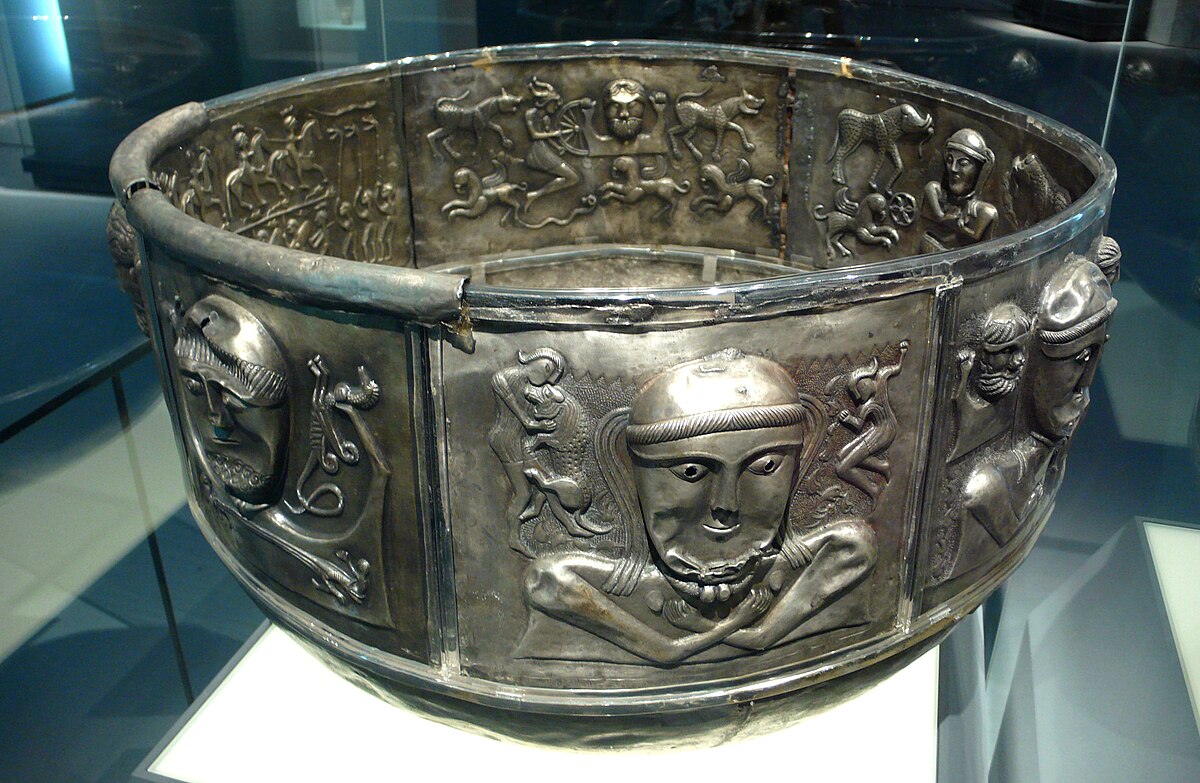
Moylough Belt Shrine
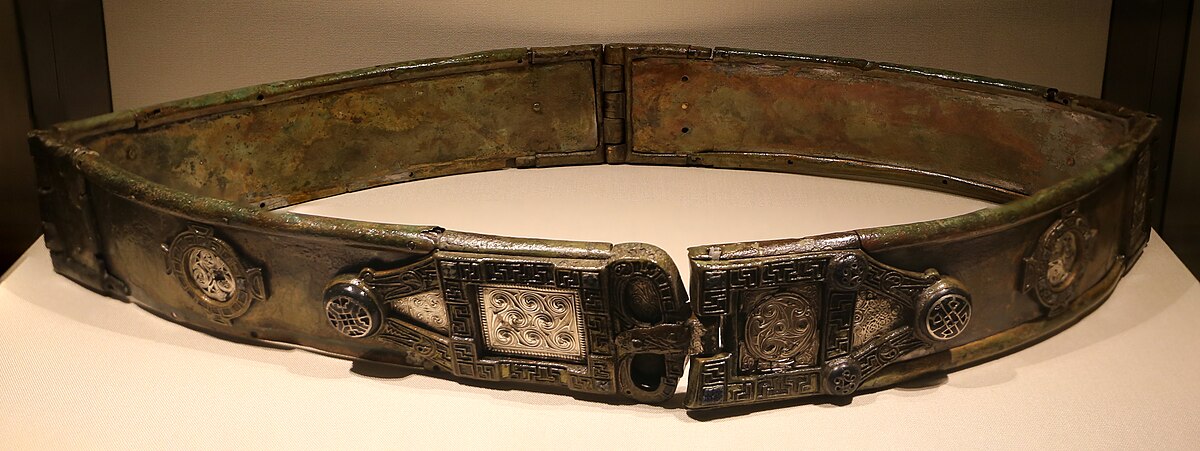
The Moylough Belt Shrine is made up of four hinged metal plates that contain the remnants of a leather belt and are surrounded by a bronze shrine. Silver, glass, and enamel are used to decorate the Shrine. The two front plates form a false buckle, and their frames are embellished with zoomorphic imagery – bird and animal heads – that ends in elaborate glass settings. They also have stamped silver sheets with spiral and interlace designs.
During the time of the Celtics, items related to the lives of saints were frequently preserved and housed in shrines or reliquaries. These containers were frequently made of precious metals and ornately decorated to highlight the significance of their relics. These shrines were usually worn around the waist or hung by a strap around the neck. They were used for rituals such as oath-taking, truth ceremonies, and even to heal sickness.
Wandsworth Shield
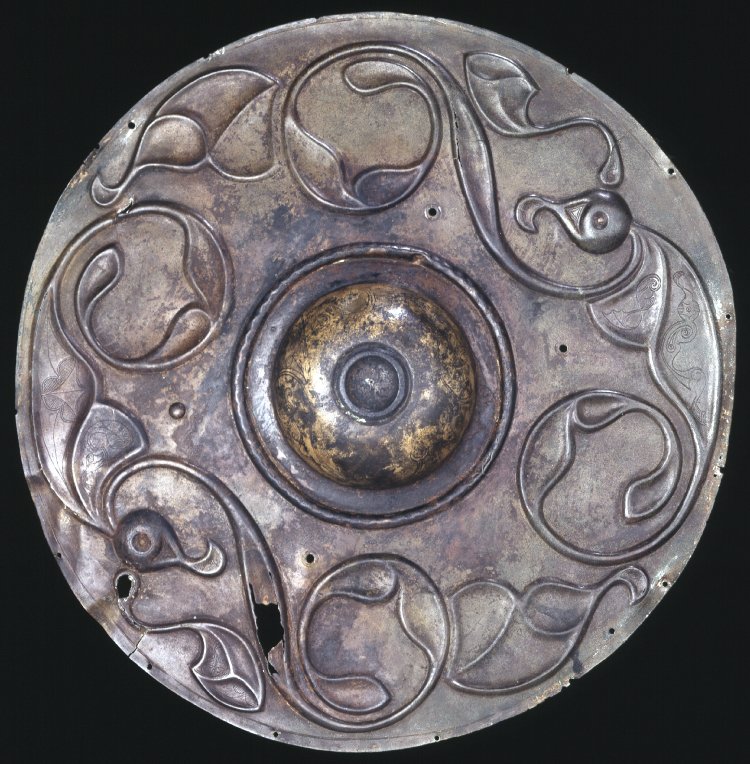
In Iron Age Britain, the ancient Celts created magnificent bronze shields for commemorative and display purposes. Some of these miraculously survived as proof of Celtic craftworkers’ imagination, mastery, and artistry. The Battersea Shield, which we mentioned earlier, is the most notable example. Several other bronze shields show how the Celts embellished shields for battle, exhibit, or offerings for their gods, like the Wandsworth Shield, which was discovered in the Thames River in 1849 CE.
The shield is decorated with stylized birds’ heads, elongated bodies, and hooked beaks. It features two creatures which appear to fly around the curvature of the shield boss, and their extremities morph into papyrus or tendrils. Small engravings of other birds and scroll-like designs can be found within the wings of the larger birds. A depression in the boss’s center most likely enclosed a decorative piece of glass coating or coral. The shield is considered a prized possession that served as a votive offering to the Celtic gods.
The Great Torc – Snettisham Hoard
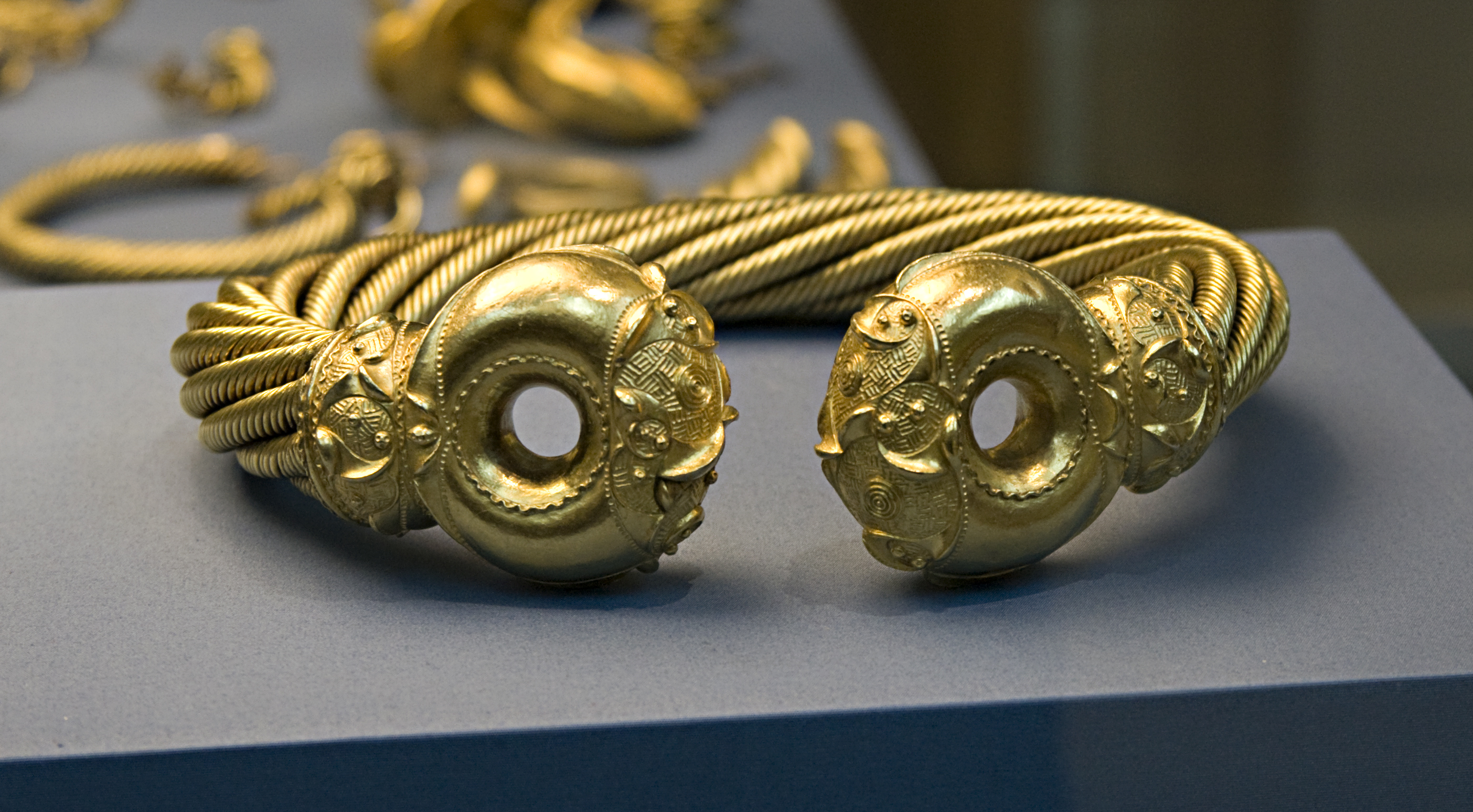
The Hochdorf Chieftain’s Grave
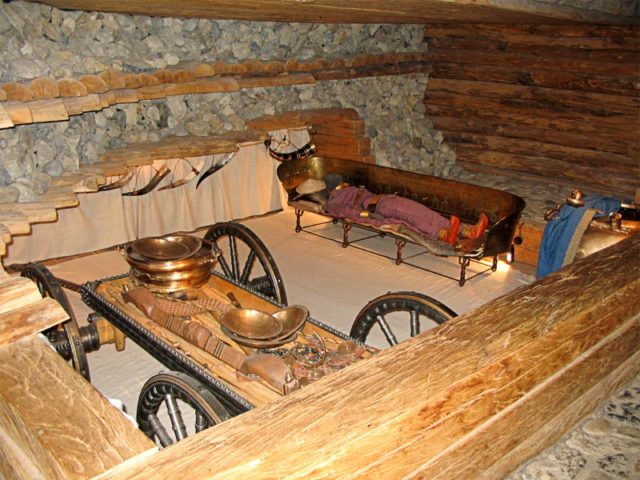
The Hochdorf Chieftain’s Grave, discovered in 1968 by an amateur archaeologist near Hochdorf in Germany and excavated in 1978, is a luxuriously furnished Celtic burial chamber that dated from 530 BC. It is one of approximately 100 such graves discovered in France, Germany, and Switzerland, dating from the second half of the sixth century BC. The man buried on a beautifully decorated 9 ft bronze couch on wheels was around 40 years old and exceptionally tall for the Iron Ages, standing just over 6ft tall. Based on the other items, this man was most likely a Celtic chieftain.
The well-preserved burial artifacts revealed plenty about the world of the Celtic rulers. He was laid to rest with a gold-plated torc around his neck, a bronze and iron gold-plated dagger, fishing hooks, a bracelet on his right arm, a nail clipper, amber jewelry, a comb, a flat cone-shaped birch bark hat adorned with circle patterns and punched decorations, a razor knife, arrows, and, his shoes with embossed gold plaques.
Staffordshire Moorlands Pan
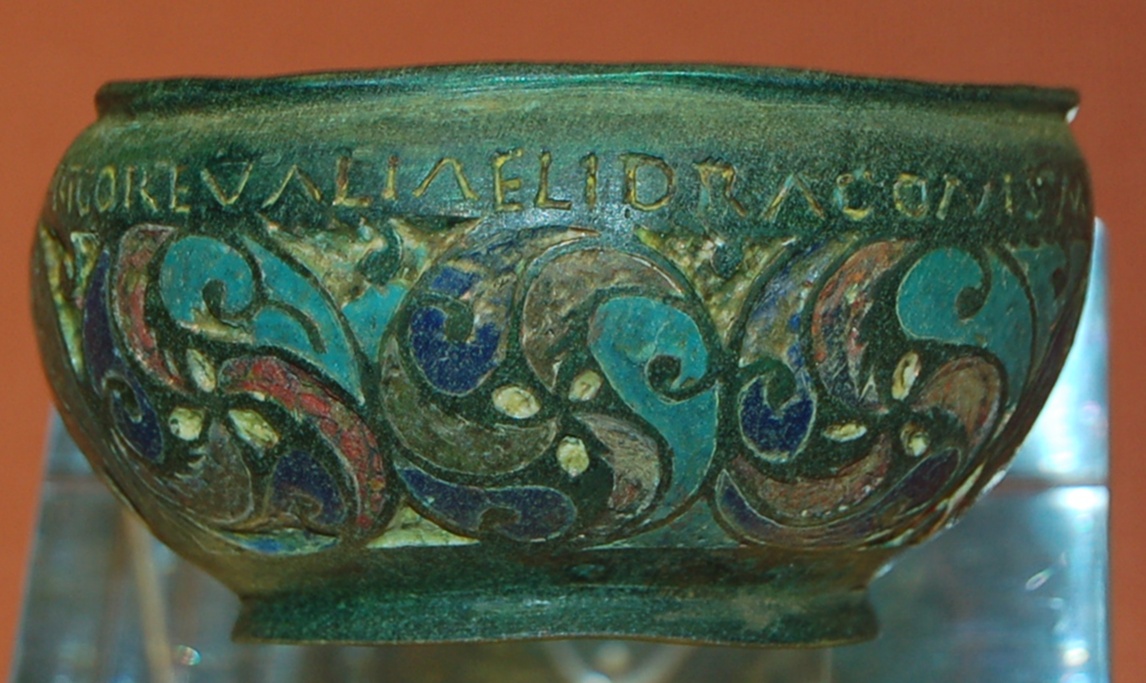
The pan is a roman Era pan or “trulla” that is lacking its base and handle. It was created between 100 and 199 CE. The pan’s decoration is colorful and swirling and reminiscent of Iron Age artwork. The pattern is made up of eight roundels separated by eight pairs of molded triangles. Each roundel contains a six-armed whirligig with a three-petaled device in the center. The roundels are engraved with turquoise and blue enamel, and the whirligigs are decorated with yellow, red, and possibly purple enamel. The arrival of the Roman army in Britain did not end this type of curvilinear artwork.
The inscription below the rim, which reads ‘MAISCOGGABATUXELODUNUMCAMMOGLANNARIGOREVALIAELIDRACONIS’ in Latin, is probably the most exciting part of the decoration. Archaeologists and scholars deciphered it as a list of four forts at Hadrian’s Wall’s western end – MAIS (Bowness-on-Solway), COGGABATA (Drumburgh), VXELODVNVM (Stanwix), and CAMMOGLANNA (Castlesteads).
The Desborough Mirror

Celtic cultures are frequently associated with brutal, warlike people. However, Celtic tribes were, in reality, highly sophisticated. They engaged in trading, traveling, building industries, and creating and preserving their oral culture and tradition.
This mirror, one of the highest examples of La Tène or Celtic art made in the United Kingdom, demonstrates this. The back features intricate swirling decoration that, when examined, was discovered to illustrate a face. Only 30 bronze mirrors such as this have been discovered in Britain and appear distinct in nature; the others were discovered to have been traded throughout Europe.
The Statue of Tarasque de Noves

The Tarasque de Noves statue is related to the Cavares, a Gallic tribe who lived in the lower Rhône valley. The sphinx like beast rests on two La Tène-style heads- it has reptilian qualities, the head of a lion or wolf, the body of a person, and a mutilated arm hanging from its snarling jaws.
Some scholars believe the fearsome beast is a tribute to tribal gods, whereas others believe it celebrates the Cavares’ fierce, warrior culture. Due to similarities with other lion-anthropophagi sculptures discovered in Provence, this object may be connected with Gallic Celtic funerary cults. According to some stories, the beast represents death, ‘swallowing’ up the body before entering a new realm.